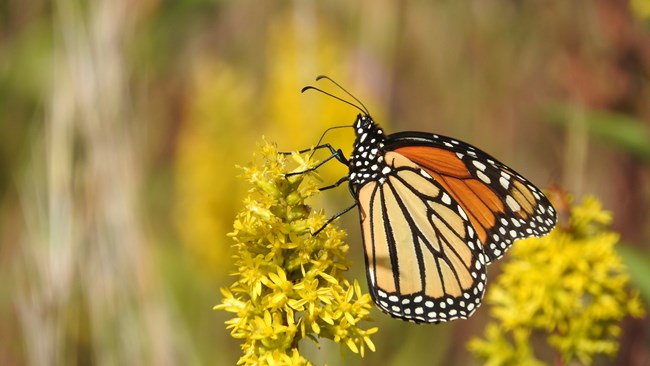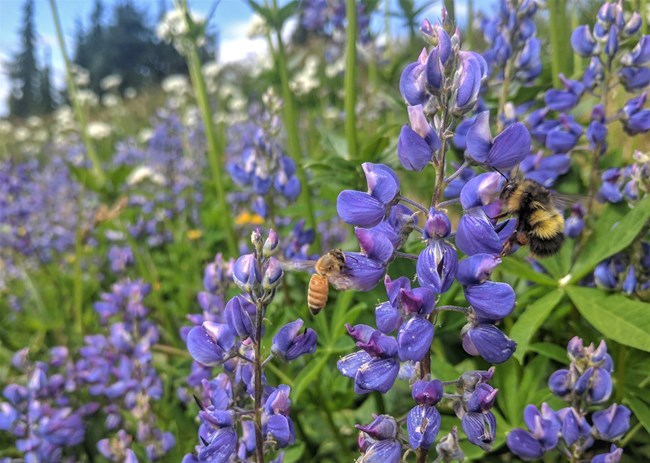Pollinators are responsible for 1 out of 3 bites of food we take each day. They are essential for the health of our ecosystems and the health of many of our food crops. However, pollinator populations are declining worldwide largely due to habitat loss and pesticide poisoning. Even small changes in our own backyards can help pollinators survive and thrive. Like all of us, these hard working creatures need food, water, and shelter.

Here are some ways you can help:
Provide habitat for pollinators.
Offer pollinators a drink.

NPS Photo / Daniel Peterson
Leave the leaves.
Dead leaves and plant material are food and shelter for pollinators in the winter. Resist the urge to rake your leaves in the fall and let them support pollinators throughout the winter season.
Limit the use of pesticides.
Before using a pesticide, ask yourself: Are flowers in bloom or are pollinators active during the pesticide application? Are there alternatives to using the pesticide? Am I applying the pesticide according to the instructions? Remember, pollinators can be harmed if they consume nectar or pollen that has come into contact with pesticides. You can also help reduce the risk of exposure by applying pesticides at night when pollinators are inactive.

Offer variety.
Ensure that different types of pollinators visit your yard by planting flowers of different shapes, sizes, and colors. Planting flowers in clumps, rather than scattering single flowers throughout the yard, makes it easier for pollinators to locate their next meal.
Nesting and sheltering sites are needed.
Remember that different types of pollinators require different things. Some bees and pollinating beetles may use downed tree limbs and logs; many butterflies lay eggs and rear their young on plants;a small patch of bare ground might serve ground-nesting bees. Potential nesting sites include trees (both living and dead), shrubs, brush piles, bare ground, and bee boxes.
Connected Conservation
Conservation at HomeLast updated: June 7, 2023
